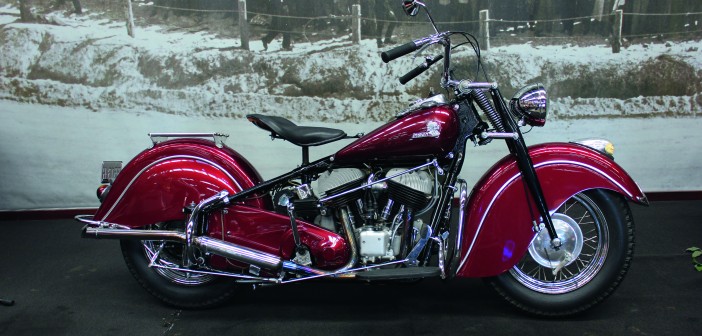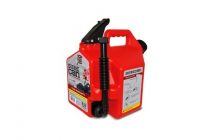There’s no mistaking it – Johnny Gee is a self-confessed Indian fanatic. One step into Antique Motorcycles in Moorabbin, Victoria will demonstrate that. And when you appreciate that this particular bike was built in the forties, it’s easy to see why so many others have fallen in love with them for just as long.
In our opinion, this bike, along with many other historical Indians, would not look out of place in a modern day manufacturing plant’s production line. Suffice it to say, their designs are timeless.
The 1946 Indian Chief motorcycle emerged as Indian’s flagship model after World War II, and the hugely popular design took the brand through the next decade.
“All of the war model bikes were supplied under the Lend-Lease policy before being sprayed ‘Indian Red’ and sold off to the public. Unsurprisingly, many of the returning servicemen bought them because of the connection they formed with the bikes after riding them during the war. They paid next to nothing, tricked them up and no doubt had a lot of fun with them.”
While Indian Red remained ever popular with buyers, other paint jobs, including two-tones, were available.
“These were post-war bikes so they’re the ones that haven’t been through a war or depression… we’re in our depression now,” Johnny laughs.
“They’re such a beautiful bike to ride – to me they’re the Duesenberg of motorbikes. Watching one of these cruising down the road is simply poetry in motion – the lines, its appearance… just everything – it’s art deco. In my opinion, it is far better looking than any other bike made in that period. It’s a big call because ’46-48 were pretty good years economically, meaning lots of bikes were made.
“The leaf-sprung trailing-link fork used before the war was replaced by girder forks. This was the first time front end girder forks were used on civilian bikes. They did have them on the military bikes but only for a model that they made a thousand of. This was a new design and it stayed on Indians for three years 46-48. After that they went to the hydraulic/telescopic front end.”
These new forks provided a full five inches of wheel travel versus the smaller two inches allowed by the previous leaf-spring design. Despite the rear wheel still featuring the same plunger-type suspension, spring rates were softened. These changes resulted in an even smoother ride than before, a notable selling feature of the post-war models.
This legendary V-twin 74-cubic-inch machine has well and truly written itself into the fabric of Indian motorcycles, and the whole motorcycle industry. If you’re looking for the perfect cruiser this summer, the ’46 Chief might just be the answer… and this one could be yours.
Antique Motorcycles
www.antiquemotorcycle.com.au





